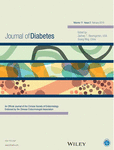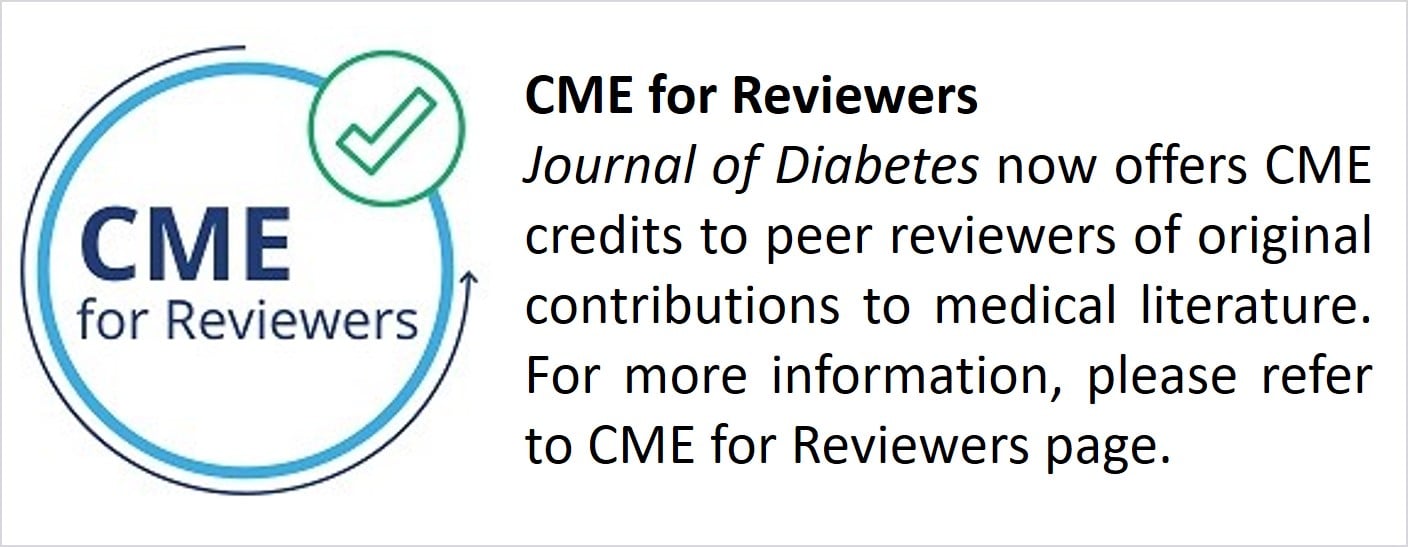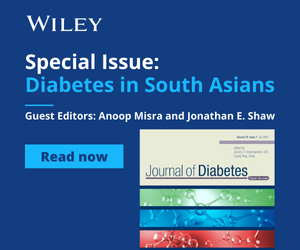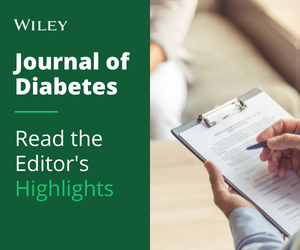Journal list menu
Export Citations
Download PDFs
Issue Information
Editorial
News
Editors' Recommendation
Risk factors for developing diabetes after 3 years among community-dwelling elderly with impaired fasting glucose
空腹血糖受损的社区老年人群三年后发生糖尿病的危险因素
- Pages: 107-114
- First Published: 25 June 2018
Highlights
- This study showed that glucose levels and physical performance may be useful markers of risk in community-dwelling elderly with impaired fasting glucose (IFG).
- This indicates that a better understanding of the factors potentially responsible for the increase in type 2 diabetes mellitus can help policy makers make decisions about diabetes prevention programs and policies.
Original Articles
Population-representative analysis of dietary supplementation among Americans with diabetes mellitus
在有代表性的美国糖尿病人群中对膳食补充剂的调查分析
- Pages: 115-121
- First Published: 25 June 2018
Highlights
- Data from the 2013–2014 National Health and Nutrition Examination Survey (NHANES) survey indicate that slightly more than six out of 10 Americans with diabetes mellitus (DM) use dietary supplements each month.
- Although dietary supplement use is higher among Americans with DM, it does not appear to be due to DM per se, but rather to other demographic and health-related factors.
- Americans with DM are using certain products to manage their disease, particularly multivitamin–mineral, cinnamon-containing, and chromium-containing supplements.
SLEep among diabetic patients and their GlycaEmic control (SLEDGE): A pilot observational study糖尿病患者睡眠状况及其血糖控制(SLEDGE):一项初步观察研究
- Pages: 122-128
- First Published: 12 July 2018
Highlights
- The prevalence of excessive daytime sleepiness (EDS) among patients diagnosed with type 2 diabetes mellitus in an urban south Indian population is 17.5%.
- There is a significant positive correlation between EDS and glycemic control, as measured by HbA1c.
Altered brain structural topological properties in type 2 diabetes mellitus patients without complications
无并发症的2型糖尿病患者脑结构拓扑特征的改变
- Pages: 129-138
- First Published: 23 July 2018
Highlights
- Structural topological properties were tested in cognitively intact type 2 diabetes mellitus (T2DM) patients.
- Cognitively intact T2DM patients had preserved small-world properties but altered nodal properties.
- Altered nodal properties may predict early cognitive decline in T2DM patients.
Effect of a new self-care guide package on maternal and neonatal outcomes in gestational diabetes: A randomized control trial一种新的自我护理指导的提案对妊娠糖尿病患者母婴预后的影响:一项随机对照试验
- Pages: 139-147
- First Published: 18 July 2018
Highlights
- Currently available maternal guides do not support all domains of self-care.
- The newly developed self-care educational package is very useful in gestational diabetes.
Short-term high-fat diet exacerbates insulin resistance and glycolipid metabolism disorders in young obese men with hyperlipidemia, as determined by metabolomics analysis using ultra-HPLC–quadrupole time-of-flight mass spectrometry短期高脂饮食加剧肥胖高血脂年轻男性胰岛素抵抗和糖脂代谢紊乱-基于超高效液相色谱四极杆飞行时间串联质谱的代谢组学分析
- Pages: 148-160
- First Published: 29 July 2018
Highlights
- Effects of a 3-day high-fat diet (HFD) on insulin resistance (IR) and glycolipid metabolism in young obese men with hyperlipidemia was evaluated, with changes in urinary metabolomics profiling after the HFD intervention determined using ultra-HPLC–quadrupole time-of-flight mass spectrometry.
- Short-term HFD exacerbates IR and glycolipid metabolism disorders, and 17 major metabolites were identified that were associated with type 2 diabetes mellitus, glycolipid metabolism and IR; changes in these metabolites suggest metabolic changes in young obese males after the HFD intervention.
- These findings may contribute to an increased understanding of the early biological adaptations of obesity with hyperlipidemia to HFD for early prevention and control of diabetes and IR.
Epidemiology of prediabetes and diabetes in Namibia, Africa: A multilevel analysis
非洲纳米比亚糖尿病前期与糖尿病的流行病学:一项多层面分析
- Pages: 161-172
- First Published: 29 July 2018
Highlights
- There is considerable community-level clustering in dysglycemia, providing logic for considering community-based prevention strategies.
- There was a positive association of diabetes with higher socioeconomic status.
- There was a strong association of body mass index with prediabetes and diabetes, and our findings suggest the trends are interlinked.









